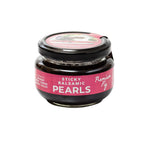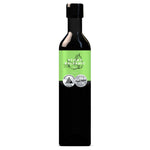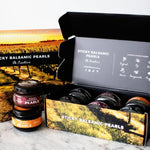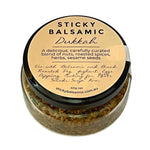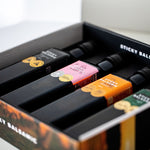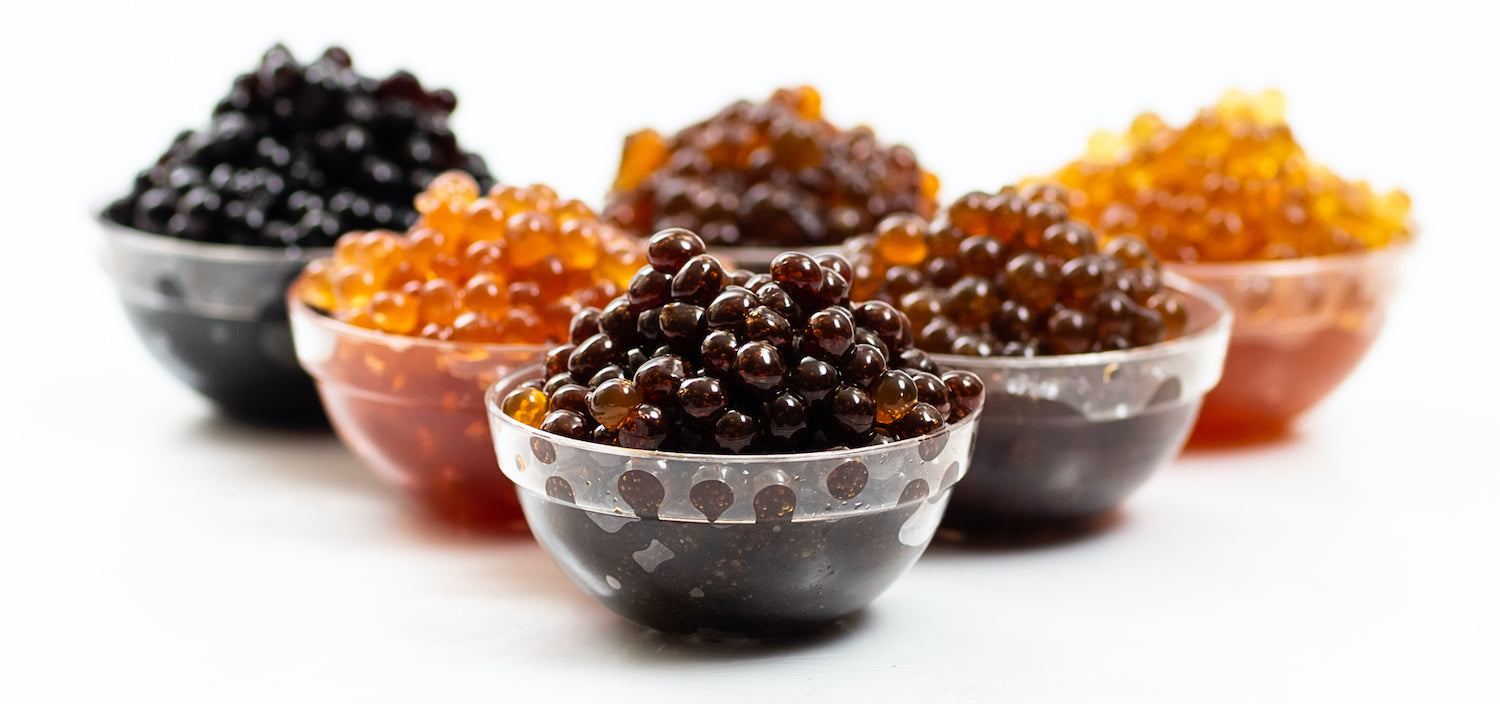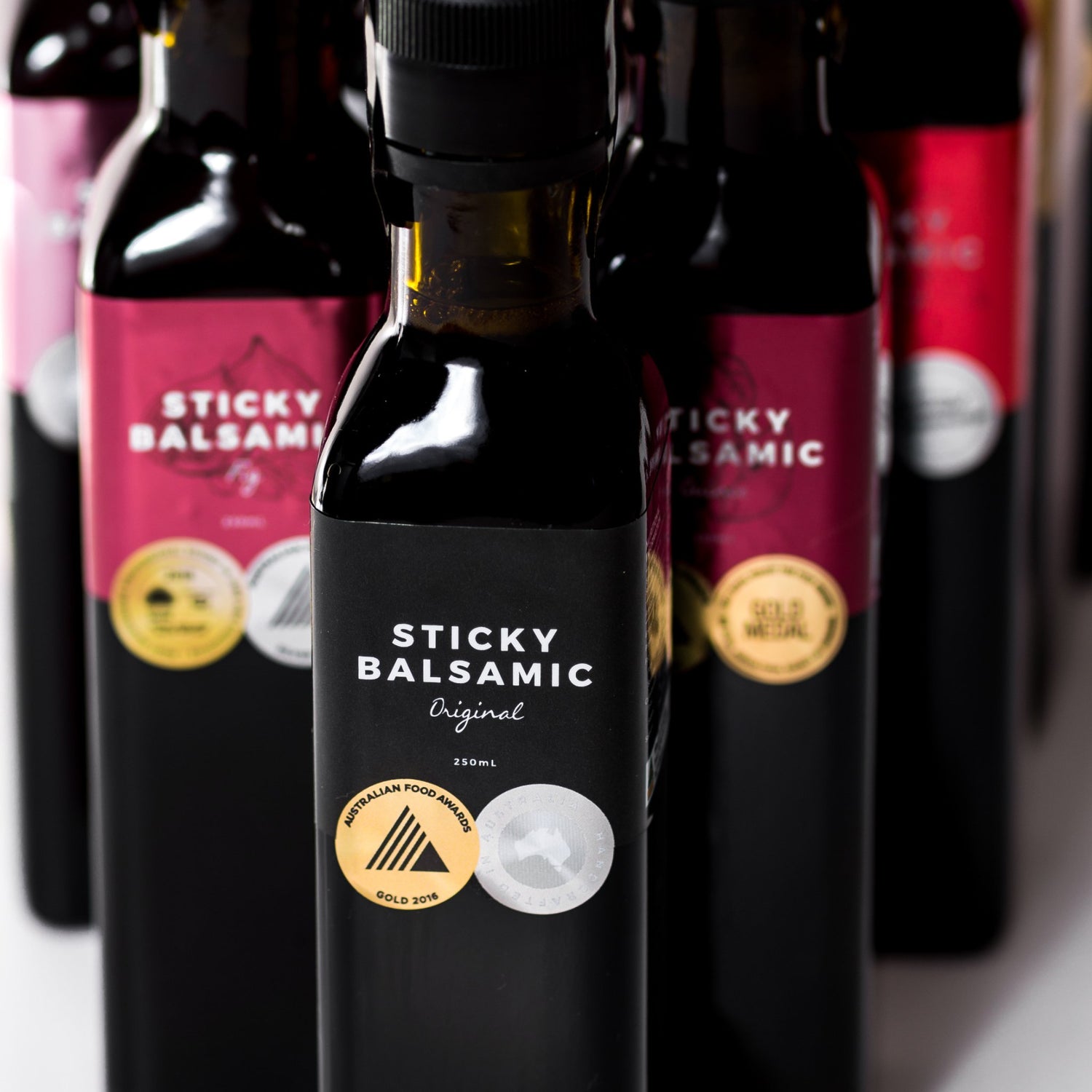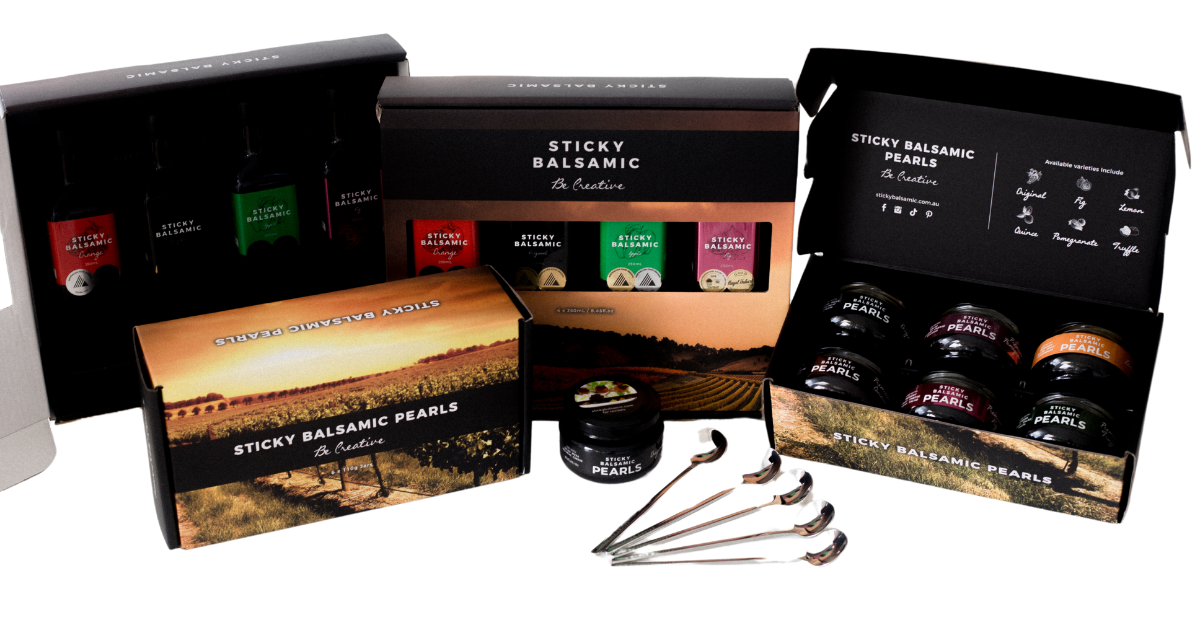Why Do Some Flavours Just... Work?
Picture this: you drizzle Sticky Balsamic Original over fresh strawberries, take a bite, and suddenly your mouth is having a party. But why? What's happening on your tongue that makes this combination so ridiculously good?
The answer lies in the fascinating world of flavour chemistry and trust us – it's way cooler than high school science class ever was.
Meet Your Taste Buds (They're Doing More Than You Think)
First, let's talk about your tongue. You've got around 10,000 taste buds working overtime every time you eat. These little flavour detectives can identify five basic tastes:
-
Sweet – Your brain's reward system (hello, dopamine!)
-
Sour – Acidity that makes your mouth water
-
Salty – The flavour enhancer extraordinaire
-
Bitter – Nature's warning system (but also coffee, so we're conflicted)
-
Umami – The savory, "moreish" taste that keeps you coming back
But here's where it gets interesting: your nose is doing about 80% of the heavy lifting when it comes to "tasting" food. Those aromatic compounds floating up through your nasal passages? They're the real MVPs of flavour.
The Chemistry of Craveable Combinations
Complementary Compounds: The Molecular Match
Ever notice how tomatoes and basil are basically best friends? Or why cheese and wine are the ultimate power couple? It's because they share similar aromatic compounds at the molecular level.
When foods share flavour compounds, they create what scientists call "flavour synergy." Your brain recognizes these shared molecules and goes, "Oh yeah, these belong together!" It's like finding someone who laughs at all your jokes – instant connection.
Sticky Balsamic Example: Sticky Balsamic Premium Fig and prosciutto work beautifully because they both contain compounds that enhance savory, slightly sweet notes. The fig's natural sugars complement the balsamic's acidity, while both play nicely with the salty, umami-rich prosciutto.
Contrast is King: The Yin and Yang of Flavour
Sometimes the best pairings aren't about similarity – they're about beautiful opposition. Think sweet and salty, rich and acidic, or creamy and crunchy.
When you pair contrasting flavours, you create balance. The acidity in balsamic vinegar cuts through rich, fatty foods, cleansing your palate and preventing flavour fatigue. It's why a drizzle of Sticky Balsamic transforms a heavy cheese board into something you can't stop eating.
The Science: Acidic foods stimulate saliva production, which literally washes away fat molecules from your taste buds, resetting them for the next delicious bite. Genius, right?
Why Strawberries and Balsamic Are Soulmates
Let's solve one of the culinary world's most delightful mysteries: why do strawberries and balsamic vinegar work SO well together?
The Sweet-Sour Dance: Strawberries are sweet with a hint of tartness. Balsamic vinegar is acidic with natural sweetness from grape must. When combined, the acidity of the balsamic enhances the strawberry's sweetness (more on that in a sec), while the balsamic's sweetness rounds out the strawberry's tartness.
Aromatic Overlap: Both strawberries and aged balsamic contain fruity, slightly floral aromatic compounds. They're speaking the same molecular language.
Texture Magic: The glossy, syrupy texture of Sticky Balsamic coats the strawberry, creating a more luxurious mouthfeel that your brain interprets as "fancy" and "delicious."
The Surprising Truth About Sweetness
Here's a mind-bender: adding acid to sweet foods actually makes them taste SWEETER. Wait, what?
It's true! A little acidity suppresses bitterness and enhances sweetness perception. This is why a squeeze of lemon makes desserts pop, and why our Sticky Balsamic Lemon Pearls are absolutely magical on fresh fruit.
Your taste buds are constantly comparing and contrasting flavours. When you introduce acidity, it creates a reference point that makes sweetness seem more intense by comparison. It's like turning up the volume on the sweet notes.
Umami: The Secret Weapon
Umami is that savory, mouth-watering quality that makes food taste more... well, MORE. It's found in aged cheeses, mushrooms, tomatoes, and – you guessed it – aged balsamic vinegar.
During the aging process, proteins in balsamic vinegar break down into amino acids (particularly glutamates), which trigger your umami receptors. This is why aged balsamic has that deep, complex, almost meaty quality that makes everything taste better.
Pro Tip: Try the Sticky Balsamic Premium Truffle Pearls on roasted mushrooms. It's an umami explosion that'll make your taste buds do a happy dance.
Temperature and Texture: The Unsung Heroes
Flavour isn't just about taste – it's a full sensory experience.
Temperature matters: Cold foods taste less sweet and less aromatic than room-temperature foods. This is why ice cream needs more sugar than cake, and why you should serve balsamic vinegar at room temperature for maximum flavour impact.
Texture is everything: The "pop" of Sticky Balsamic Pearls isn't just fun – it's scientifically proven to enhance flavour perception. When you experience textural contrast (like a burst of liquid inside a delicate sphere), your brain pays more attention to the flavours, making them seem more intense.
The Maillard Reaction: Brown = Delicious
Ever wonder why grilled, roasted, and caramelized foods taste so good? Thank the Maillard reaction – the chemical process that happens when proteins and sugars are exposed to heat.
This browning process creates hundreds of new flavour compounds that didn't exist before. It's why grilled vegetables drizzled with Sticky Balsamic are infinitely better than raw veggies with balsamic (though both are delicious).
Try This: Roast Brussels sprouts until crispy and caramelized, then toss with Sticky Balsamic Original. The Maillard-induced nuttiness plus Sticky Balsamic's sweet-tart complexity? Chef's kiss.
Fat: The Flavour Delivery System
Here's why cheese and balsamic are such good friends: fat is a flavour carrier. Many aromatic compounds are fat-soluble, meaning they dissolve in fat and coat your mouth, prolonging the flavour experience.
When you pair fatty foods (cheese, avocado, salmon) with acidic balsamic, the acid cuts through the fat while the fat carries the balsamic's complex flavours throughout your mouth. It's a beautiful partnership.
Putting Science into Practice: Pairing Principles
Now that you know the science, here are some foolproof pairing principles:
1. Match Intensity
Delicate flavours need delicate partners. Bold flavours can handle bold companions. Pair Sticky Balsamic Lemon with light seafood, but bring out the Sticky Balsamic Original for hearty grilled steak.
2. Bridge with Shared Compounds
Look for ingredients that share flavour notes. Sticky Balsamic Premium Pomegranate works beautifully with duck because both have fruity, slightly tart characteristics.
3. Balance with Contrast
Rich? Add acid. Sweet? Add salt. Fatty? Add brightness. The Sticky Balsamic pearls are perfect for this – they add acidity and sweetness in one convenient, flavour-bursting sphere.
4. Layer Your Flavours
Great dishes have multiple flavour layers. Start with a base (grilled chicken), add richness (creamy goat cheese), introduce contrast (Sticky Balsamic Premium Fig), and finish with texture (toasted walnuts).
Fun Experiments to Try at Home
The Sweetness Test: Taste a piece of dark chocolate. Now taste it again with a tiny drop of Sticky Balsamic Original. Notice how much sweeter the chocolate tastes? That's acid enhancing sweetness in action!
The Aromatic Challenge: Hold your nose and taste something. Then release your nose and taste again. Mind = blown. You'll realize just how much your sense of smell contributes to flavour.
The Temperature Experiment: Try the Sticky Balsamic pearls straight from the fridge, then at room temperature. The room-temperature Sticky Balsamic pearls will taste more complex and aromatic.
Why This Matters for Your Cooking
Understanding flavour science isn't just nerdy fun (though it totally is) – it makes you a better cook. When you know WHY things work, you can:
-
Improvise confidently in the kitchen
-
Fix dishes that taste "off" (needs acid? sweetness? salt?)
-
Create your own signature flavour combinations
-
Impress dinner guests with your culinary wizardry
The Sticky Balsamic Advantage
Here's why these products work so well in so many applications: premium Sticky Balsamic products are flavour powerhouses. They bring:
-
Acidity to brighten and balance
-
Sweetness from aged grape must
-
Umami from the aging process
-
Complexity from hundreds of aromatic compounds
-
Texture (especially with Sticky Balsamic pearls!) for sensory interest
It's basically a Swiss Army knife of flavour – which is why it works on everything from ice cream to steak.
Your Flavour Friday Challenge
This week, try creating one "scientifically perfect" pairing using the principles we've discussed. Here are some ideas to get you started:
-
Fatty + Acidic: Avocado toast with Sticky Balsamic Lemon Pearls
-
Sweet + Sour: Vanilla ice cream with Sticky Balsamic Original
-
Umami + Umami: Aged parmesan with Sticky Balsamic Premium Truffle Pearls
-
Complementary Compounds: Tomato and mozzarella with Sticky Balsamic Premium Pomegranate
Share your creations with us on social media using #FlavourFriday and #StickyBalsamic – we love seeing your culinary experiments!
The Bottom Line
Great flavour pairings aren't accidents – they're chemistry, biology, and physics working together to create deliciousness. Now that you understand the science, you can approach cooking with more confidence and creativity.
So go forth and experiment! Try unexpected combinations. Trust your taste buds. And remember: when in doubt, add Sticky Balsamic. Science says it works.

